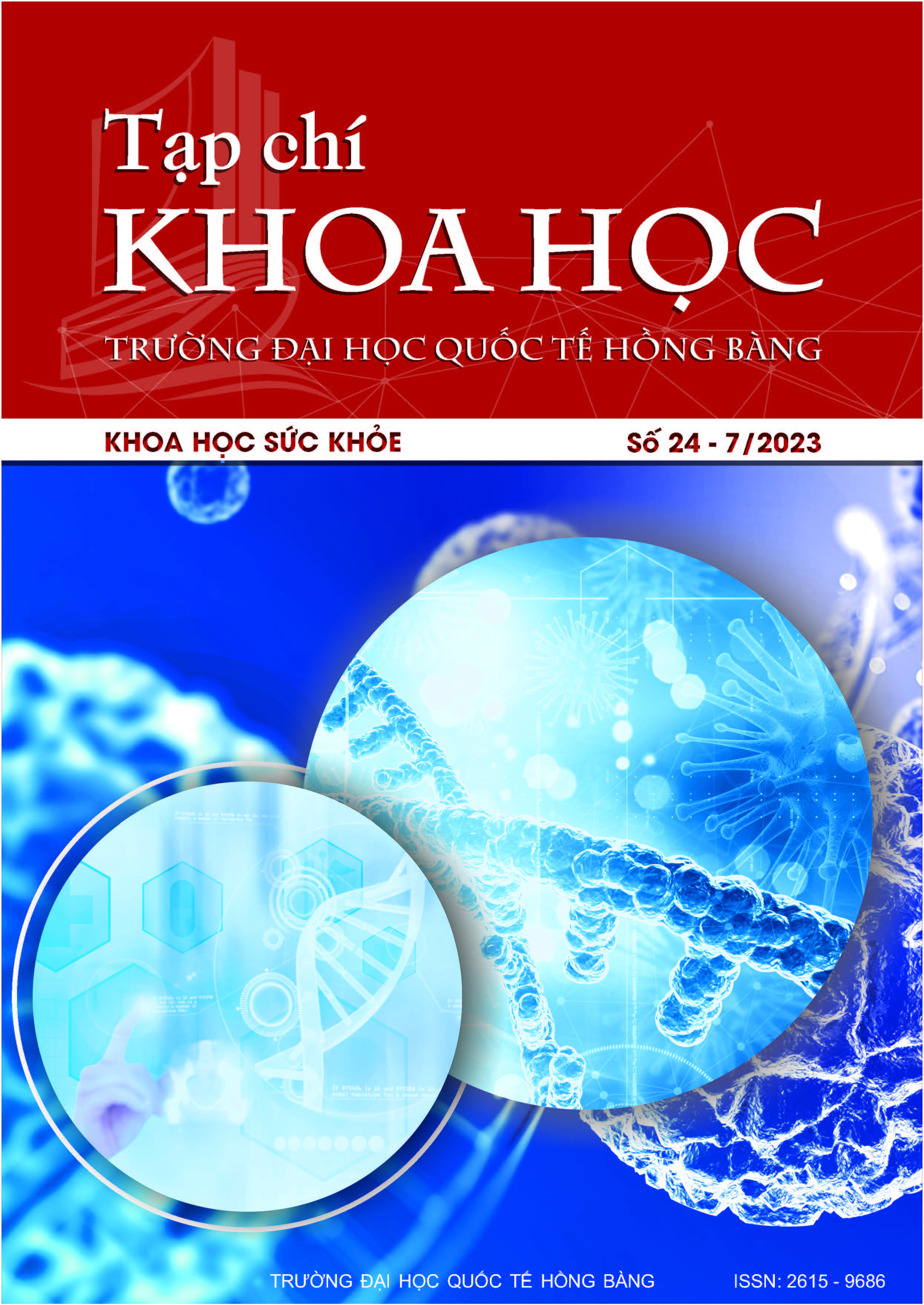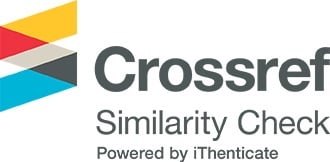Khả năng chống oxy hóa của cao chiết từ quả và rễ cây nhàu (Morinda citrifolia L.)
Các tác giả
DOI: https://doi.org/10.59294/HIUJS.24.2023.321Từ khóa:
Nhàu, cao chiết quả và rễ, kháng oxy hóa, DPPH, peroxy hóa lipid tế bàoTóm tắt
Đặt vấn đề: Nhàu đã được sử dụng từ lâu ở Việt Nam và nhiều nước khác. Do đó việc nghiên cứu về tác dụng dược lý của các bộ phận từ Nhàu sẽ thúc đẩy khai thác nguồn dược liệu quí, sẵn có ở VN. Mục tiêu: Đề tài được thực hiện để khảo sát tác dụng chống oxy hóa của cao chiết từ quả và rễ Nhàu. Đối tượng nghiên cứu là rễ và quả Nhàu tươi và khô. Phương pháp: Khả năng chống oxy hóa của cao chiết từ quả và rễ Nhàu được đánh giá qua thử nghiệm dập tắt gốc tự do DPPH (1.1-diphenyl-2-picrylhydrazyl) và thử nghiệm chống peroxy hóa lipid tế bào não chuột. Kết quả cho thấy cao chiết từ rễ Nhàu được chiết bằng cồn 96% thể hiện hoạt tính dập tắt gốc tự do DPPH (1.1-diphenyl-2-picrylhydrazyl) và ức chế peroxy hóa lipid tế bào tốt hơn các cao chiết nước hay cồn 45%. Hoạt tính ức chế peroxy hóa lipid tế bào của cao chiết rễ Nhàu mạnh hơn chứng dương Trolox. Kết luận: Dạng cao chiết cồn 96% từ rễ Nhàu khô cho thấy triển vọng tốt đối với tác dụng chống oxy hóa và mở ra hướng nghiên cứu trên in vivo tác dụng của cao chiết tiềm năng từ rễ Nhàu trên các mô hình bệnh lý đối với tổn thương do stress oxy hóa.
Abstract
Background: Noni tree (Morinda cirifolia L.) is the medicinal plant that has been used for a long time in Vietnam and other countries around the world. A lot of research shows that Noni fruit has effects of stimulating the immune system, anti-diabetes, and cancer treatment. In Vietnam, Noni trees grow very well in many localities. Therefore, the study of the chemical composition and pharmacological effects of the parts from Noni helps to find out a valuable source of medicinal material, available in Vietnam; from which to produce preparations with good medicinal use, supported by scientific evidence. Objective: The study was carried out to investigate the antioxidant effect of extracts from Noni fruit and root. The object of the research is fresh and dried Noni roots and fruits collected from a few different localities in Vietnam. Methods: The antioxidant capacity of the extracts was evaluated by the DPPH free radical scavenging assay and the rat brain cell lipid peroxidation assay. The results show that the dried noni root extract, which was thoroughly extracted with 96% alcohol solvent, exhibits better than other extracts on antioxidant activity against DPPH free radicals and lipid peroxidation of rat brain cells. The inhibitory activity on lipid peroxidation of rat brain cells of the ethanol extract of Noni root was stronger than that of the positive control Trolox. Conclusion: The results open the way for further in vivo research on the effects of this potential extract in pathological models of oxidative stress injury.
Tài liệu tham khảo
[1] Đ.H.Bích, Đ.Q. Chung, B.X. Chương…T. Toàn, Cây thuốc và động vật làm thuốc ở Việt Nam, tâp 2, Hà nội: Nxb Khoa học và kỹ thuật, 2004, trang 443-445.
[2] Algenstaedt, P., A. Stumpenhagen, and J. Westendorf, The effect of Morinda citrifolia L. fruit juice on the blood sugar level and other serum parameters in patients with diabetes type 2. Evidence-Based Complementary and Alternative Medicine, 2018. Aug 6;2018:3565427. doi: 10.1155/2018/3565427.
DOI: https://doi.org/10.1155/2018/3565427[3] Lee, S.-Y., et al., Antidiabetic effect of Morinda citrifolia (Noni) fermented by Cheonggukjang in KK-Ay diabetic mice. Evidence-Based Complementary and Alternative Medicine, 2012:163280. doi: 10.1155/2012/163280. Epub 2012 Aug 27.
DOI: https://doi.org/10.1155/2012/163280[4] Rao, A., M. Bharani, and V. Pallavi, "Role of antioxidants and free radicals in health and disease", Adv Pharmacol Toxicol, 7(1), p. 29-38, 2006.
[5] Dussossoy, E., et al., "Pulmonary anti-inflammatory effects and spasmolytic properties of Costa Rican noni juice (Morinda citrifolia L.)", Journal of ethnopharmacology, 192, p. 264-272, 2016.
DOI: https://doi.org/10.1016/j.jep.2016.07.038[6] Lim, S.-L., et al., "Metastasized lung cancer suppression by Morinda citrifolia (Noni) leaf compared to Erlotinib via anti-inflammatory, endogenous antioxidant responses and apoptotic gene activation", Molecular and cellular biochemistry, 416(1), p. 85-97, 2016.
DOI: https://doi.org/10.1007/s11010-016-2698-x[7] Jayaraman, S.K., M.S. Manoharan, and S. Illanchezian, "Antibacterial, antifungal and tumor cell suppression potential of Morinda citrifolia fruit extracts", International Journal of Integrative Biology, 3(1), p. 44-49, 2008.
[8] Nayak, S. and S. Mengi, "Immunostimulant activity of noni (Morinda citrifolia) on T and B lymphocytes", Pharmaceutical Biology, 48(7), p. 724-731, 2010.
DOI: https://doi.org/10.3109/13880200903264434[9] Rohman, A., S. Riyanto, and D. Utari, "Antioxidant activities, total phenolic and flavonoid contents of ethyl acetate extract of Mengkudu (Morinda citrifolia, L) fruit and its fractions", Indonesian Journal of Pharmacy, Vol. 17, No. 3, p. 136-142, 2006.
[10] Viện Dược liệu, Phương pháp nghiên cứu tác dụng dược lý của thuốc từ dược thảo, Thành phố Hồ Chí Minh: Nxb. Khoa học và Kỹ thuật, 2006.
[11] Sagar B. Kedare and R. P. Singh, Genesis and development of DPPH method of antioxidant assay, J. Food Sci. Technol., 48(4), 412–422, 2011.
DOI: https://doi.org/10.1007/s13197-011-0251-1[12] Cheeseman K.H., “Studies on lipid peroxidation in normal and tumor tissues”, J. Bio. Chem., 1986, 235(2), 507–514, 1986.
DOI: https://doi.org/10.1042/bj2350507[13] Stroev E. A., Makarova V. G., Determination of lipid peroxidation rate in tissue homogenate laboratory. In: Manual in Biochemistry, Moscow, 243 -256, 1989.
[14] A. Bunea, D. O. Rugina, A. M. Pintea, Z. Sconta, C. I. Bunea, C. Socaciu, “Comparative polyphenolic content and antioxidant activities of some wild and cultivated blueberries from Romania”, Not Bot Horti Agrobo, 39(2),70-76, 2011.
DOI: https://doi.org/10.15835/nbha3926265Tải xuống
Tải xuống: 552











